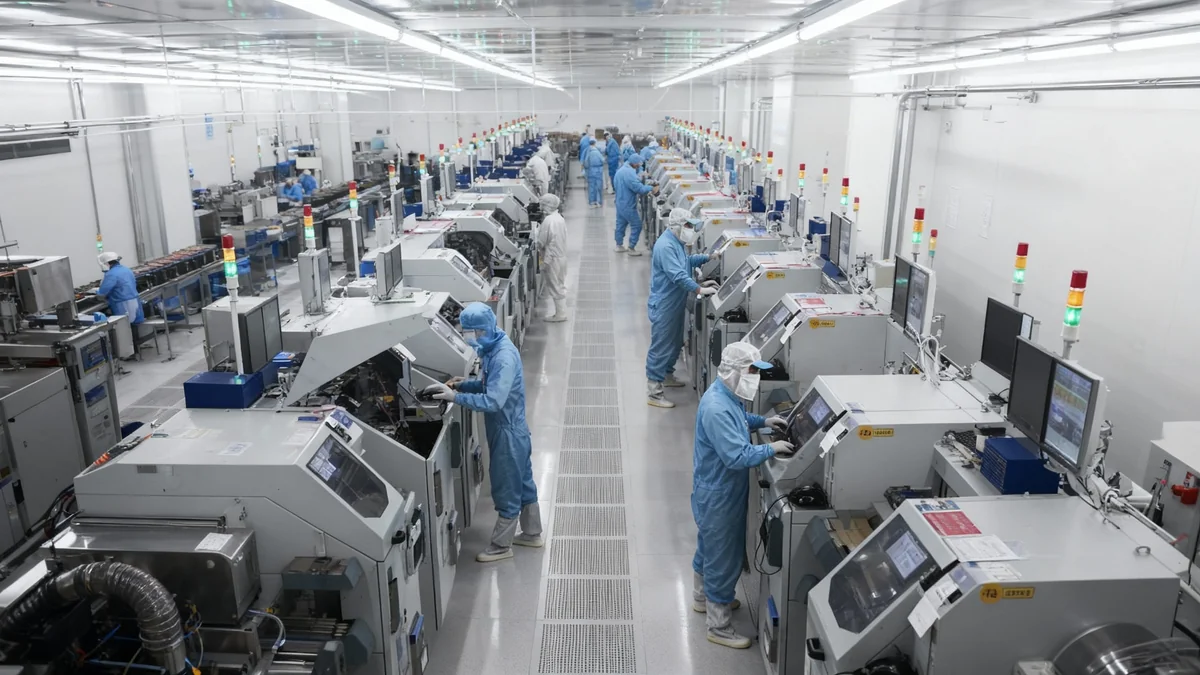A growing number of technology leaders and policymakers in the United States are focusing on the pursuit of artificial general intelligence (AGI), a theoretical form of AI that could match or surpass human cognitive abilities. However, this emphasis on a futuristic goal may be distracting from the more immediate and practical competition with China, which is centered on the widespread adoption and integration of existing AI technologies.
While the U.S. directs resources toward achieving a technological breakthrough that may be decades away, or even impossible, China is systematically embedding AI into its economy and infrastructure. This strategic difference could leave the United States behind in the real-world application of artificial intelligence, regardless of who leads in theoretical research.
Key Takeaways
- The U.S. policy and tech industry focus on Artificial General Intelligence (AGI) may be a strategic misstep.
- China's strategy prioritizes the rapid, widespread adoption and integration of current AI technologies across industries.
- Experts argue the AI competition is a marathon of practical application, not a sprint to a single AGI breakthrough.
- Current advanced AI models still face fundamental limitations, making the timeline for AGI highly uncertain.
- A shift in U.S. strategy toward AI literacy, infrastructure modernization, and practical adoption is recommended to maintain leadership.
The Allure of Artificial General Intelligence
In recent years, the concept of AGI has captured the imagination of Washington D.C. and Silicon Valley. High-profile figures like OpenAI CEO Sam Altman have made statements suggesting that transformative AI is imminent, comparing its development to world-changing events like the Manhattan Project. These declarations have influenced the political landscape, prompting discussions about the immense geopolitical advantages the first nation to develop AGI might gain.
This narrative has been amplified in government circles. In a September 2024 hearing, Senator Richard Blumenthal stated that AGI is "here and now," predicting its arrival within one to three years. Similarly, Senator Mike Rounds introduced legislation in July 2025 to create a Pentagon steering committee for AGI. The bipartisan U.S.-China Economic and Security Review Commission even advocated for a "Manhattan Project–level effort" to ensure American leadership in the field.
Defining AGI
Artificial General Intelligence refers to a hypothetical AI system with the ability to understand, learn, and apply its intelligence to solve any problem a human being can. Unlike narrow AI, which is designed for specific tasks like playing chess or driving a car, AGI would possess generalized cognitive abilities, including reasoning, problem-solving, and creativity across multiple domains.
The logic behind this intense focus is straightforward: a true AGI could potentially self-improve at an exponential rate, solving humanity's most complex problems. The country that controls such a technology could secure an unparalleled economic and military edge, effectively ending the geopolitical race before other nations can catch up.
A Race Without a Finish Line
Despite the excitement, a growing chorus of experts urges skepticism. A primary issue is that there is no consensus definition of AGI. AI researchers disagree on what capabilities such a system would need to possess, making it difficult to establish a clear goal for development. Without a defined finish line, policies built around racing toward it are inherently speculative.
Prominent computer scientists, including Andrew Ng, have questioned whether AGI as currently conceived is even achievable. Today's most advanced large language models, while impressive, still struggle with fundamental challenges. They exhibit shallow reasoning, have difficulty generalizing knowledge to new situations, and lack long-term memory or the ability to continuously learn from experience. Issues like "hallucinations," where models generate false information, remain persistent problems.
The Reality of AI Project Failures
The transition from AI prototype to production is notoriously difficult. According to industry analysis, more than 80% of AI projects fail to deliver their intended results. Furthermore, some surveys indicate that as many as 88% of pilot projects never reach full-scale production, often due to integration challenges and a mismatch between the technology and the problem it is meant to solve.
Historical technological advancements offer a more realistic model for AI's evolution. Electricity, for instance, was not a single invention but the result of decades of cumulative work by numerous scientists and engineers. Its transformative power was realized through gradual adoption and the development of a vast supporting infrastructure, not a single breakthrough. Similarly, the internal combustion engine, invented in 1876, took decades of refinement and production innovations, like those by the Ford Motor Company, before it changed society.
China's Pragmatic Approach to AI
While some in the U.S. chase a hypothetical superintelligence, China is executing a strategy focused on practical application. Beijing's approach treats the AI competition as a long-term marathon, emphasizing steady advancements and deep economic integration. The country's "AI Plus Initiative" aims for widespread, industry-specific adoption by 2027, with the goal of making AI a core part of the national infrastructure by 2030.
This focus on application is already yielding results. China is outpacing the United States in the deployment of robotics and is rapidly integrating AI into its manufacturing, logistics, and surveillance systems. While Chinese firms like DeepSeek and Huawei are also investing in frontier AI research, the government's primary emphasis is on scaling and applying current and near-term capabilities as quickly as possible.
"The United States should therefore treat the AI race with China like a marathon, not a sprint... To win the AI race, Washington thus needs to emphasize practical investments in the development and rapid adoption of AI. It cannot distort U.S. policy by dashing for something that might not exist." - Michael C. Horowitz and Lauren Kahn
This pragmatic strategy allows China to build a foundation of AI-powered infrastructure and a skilled workforce, which could provide a significant long-term advantage even if the U.S. continues to lead in creating the most advanced algorithms.
A New Strategy for US AI Leadership
To maintain its competitive edge, the United States needs to shift its focus from the speculative pursuit of AGI to the practical challenge of AI adoption. This requires a multi-faceted strategy aimed at integrating AI across government and industry.
Key Policy Recommendations:
- Launch a National AI Literacy Initiative: Public sector employees at all levels must be trained to use general and job-specific AI systems. This includes education on the limitations of AI, such as automation bias, where humans tend to over-trust AI-generated outputs.
- Modernize Government Infrastructure: Effective AI implementation requires significant investment in hardware, computing power, and modern data management systems. Decades of bureaucratic inertia have left many government systems, including those in the Pentagon, unprepared for large-scale AI adoption.
- Support Academic and Independent Research: The government should expand support for programs like the National AI Research Resource. This initiative provides researchers at universities with access to the computational power and tools needed to innovate, ensuring that breakthroughs are not limited to a few large tech companies.
By demonstrating how AI can be integrated into large, complex bureaucracies like the federal government, Washington can create a roadmap for the private sector. This would help lower perceived risks and overcome the high failure rate of corporate AI projects. Such a move would also create clear demand for scalable, near-term AI applications rather than just frontier models.
This does not mean abandoning research into advanced AI. Policies that support general AI research and development, such as the 2022 CHIPS and Science Act, will naturally contribute to the creation of more sophisticated systems. However, the primary objective must be the rapid scaling of practical AI solutions that deliver tangible benefits today. Chasing a myth is not a sound strategy; building a robust, AI-integrated economy is.





